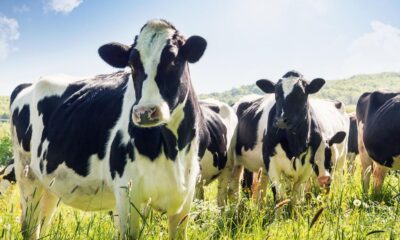Food
Concerns about bird flu are becoming serious

In recent days, it seems like the world has gotten serious about the H5N1 flu, also known as bird flu. There is even informed speculation from some qualified scientists that human-to-human transmission is probably already happening.
Food safety and public health are not yet major concerns. Raw milk is riskier than ever, but pasteurized dairy products, eggs and poultry are all safe to eat. The Centers for Disease Control and Prevention assesses the current public health risk as low, but is monitoring the situation and working with states to monitor people with animal exposure.
An example of the seriousness of the situation in the world is that Finland is delivering 20,000 doses of vaccine to its citizens who are at risk of exposure to a bird flu that is spreading among agricultural and wild animals.
Health officials in Finland expect to be the first country to take such a step, as concerns grow about the threat the virus poses to people. Finland’s vaccine campaign uses doses from poultry farmers, veterinarians, scientists studying the virus and those working on fur farms housing animals such as minks and foxes, which are victims of outbreaks.
In the United States, most attention has been focused on the four people infected with bird flu since the beginning of 2022. The first human case involved a Colorado poultry worker, reported on April 28, 2022. The other three human cases resulted from exposure to dairy cows in April. and May this year.
The four human cases in the US reportedly had varying symptoms, but all recovered.
According to the World Health Organization, H5N1 flu has a mortality rate of 50 percent, which is much higher than that of Covid-19. And H5N1 has caused 463 deaths since the first human case in 1997.
Last week’s report of a 59-year-old male resident of Mexico who died after being infected with a bird flu subtype has never before been confirmed to have spread to humans, according to the WHO. The man is not known to have been exposed to poultry or other animals. His symptoms included nausea, fever and shortness of breath. He did suffer from other underlying health problems.
A laboratory with the H5N2 subtype of bird flu formally diagnosed the condition. This case marks the first time a human has been confirmed to be infected with this subtype and the first time an avian H5 virus has been confirmed in a person in Mexico.
The UN-related health agency said the Mexican case does not change current WHO recommendations on public health measures and flu surveillance, adding that the assessment of current risks to the general population is “low”.
Meanwhile, Australia has notified the WHO of its first human case of H5N1 flu (clade 2.3.2.1a), in a two-year-old child likely exposed in India.
The child has no underlying conditions and had traveled to Kolkata, India, in February before returning to Australia. The girl tested positive for H5N1 bird flu and required intensive care treatment at a hospital in Australia after returning from India.
“Although the source of exposure to the virus in this case is currently unknown, the exposure likely occurred in India,” where the girl had traveled, and where this group of “viruses has been found in birds in the past,” the WHO said. said.
The 2-year-old traveled to Kolkata from February 12 to 29. As far as we know, she had not been exposed to sick people or animals in the city. She returned to Australia on March 1 and was admitted to a hospital in the southeastern state of Victoria the next day. The girl is reportedly doing well, and none of her relatives in Australia or India have developed symptoms.
China has also reported one death from the H5N6 bird flu. A 52-year-old woman from Fujian province died on April 30 after being treated for symptoms at the Hong Kong Center for Health Protection from April 13.
H5N6 has been circulating in China since 2014, with 90 human cases recorded.
The deceased woman was exposed to poultry in the backyard.
(To sign up for a free subscription to Food Safety News, Click here.)











